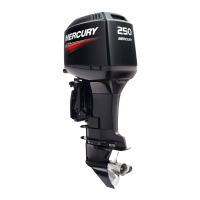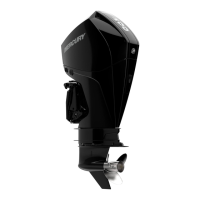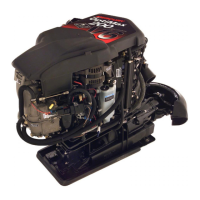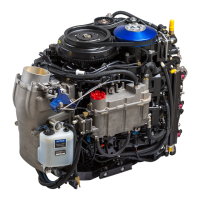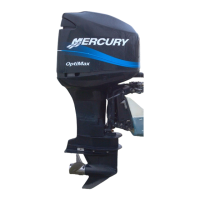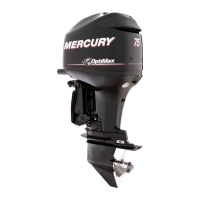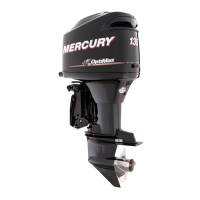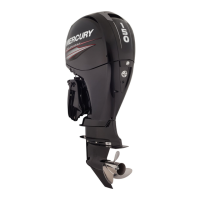MAINTENANCE
54
• Inspect the alternator belt. See Alternator Belt Inspection.
• Check the corrosion control anodes. Check more frequently
when used in saltwater. See Corrosion Control Anodes.
• Drain and replace the gearcase lubricant. See Gearcase
Lubrication.
• Check the power trim fluid. See Checking Power Trim Fluid.
• Inspect the battery. See Battery Inspection.
•
Check the control cable adjustments.
1.
•
Lubricate the splines on the driveshaft and shift shaft.
1.
• Check tightness of bolts, nuts, and other fasteners.
• Check cowl seals to make sure seals are intact and not
damaged.
• Check internal cowl sound reduction foam (if equipped) to
make sure foam is intact and not damaged.
• Check that the intake silencer (if equipped) is in place.
• Check that the idle relief muffler (if equipped) is in place.
• Check for loose hose clamps and rubber boots (if equipped)
on the air intake assembly.
EVERY 300 HOURS OF USE OR THREE YEARS
• Replace the water pump impeller (more often if overheating
occurs or reduced water pressure is noted).
1.
• Inspect the poppet valve assembly for deterioration of the
rubber diaphragm. Replace the rubber diaphragm if
necessary.
1.
• Replace the two in‑line oil filters located in the air compressor
oil return lines.
1.
BEFORE PERIODS OF STORAGE
• Refer to Storage procedure. See Storage section.
Flushing The Cooling System
Flush the internal water passages of the outboard with fresh water
after each use in salt, polluted, or muddy water. This will help
prevent a buildup of deposits from clogging the internal water
passages.
1. These items should be serviced by an authorized dealer.
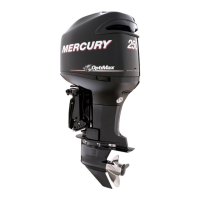
